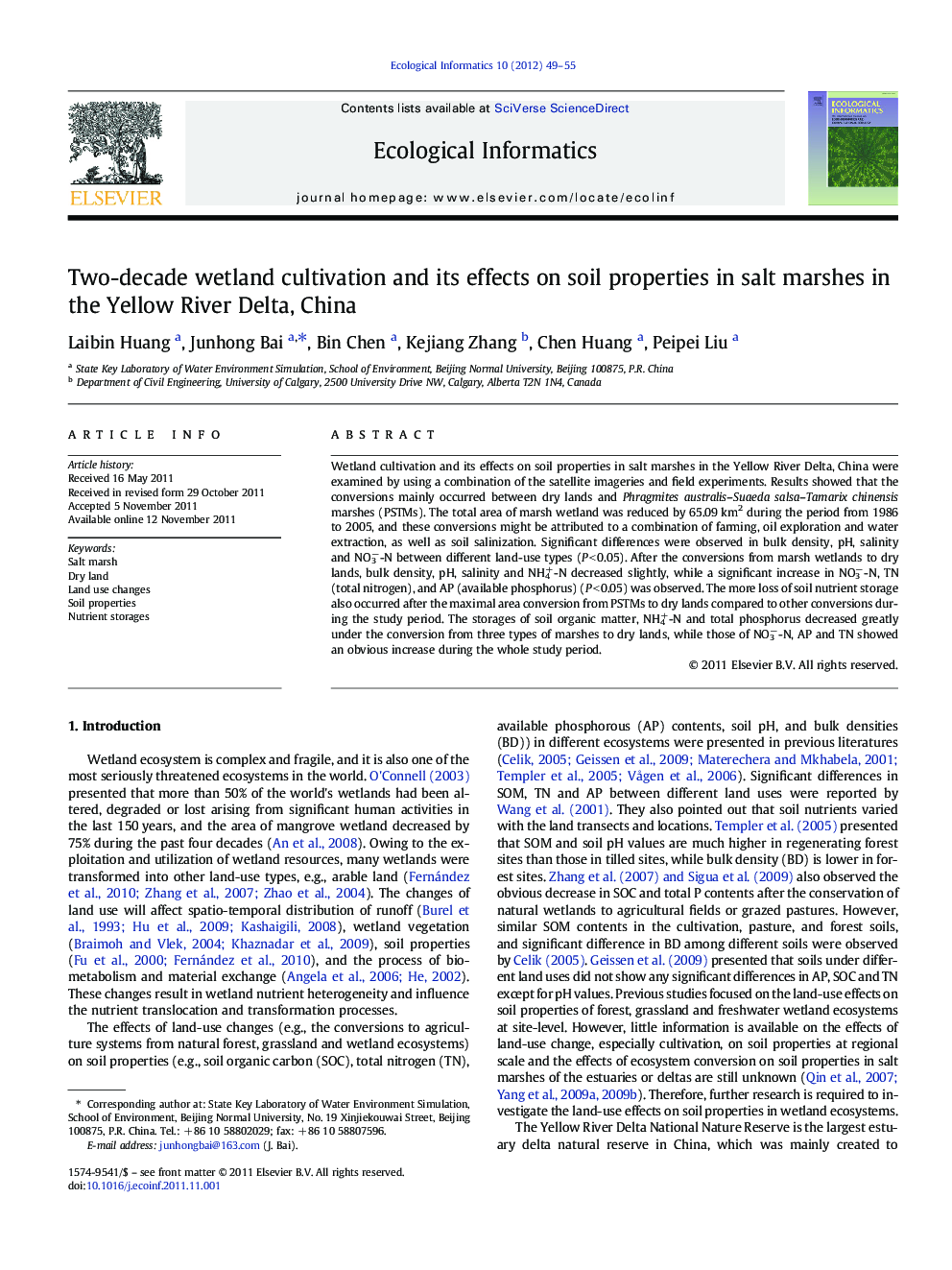| Article ID | Journal | Published Year | Pages | File Type |
|---|---|---|---|---|
| 4375066 | Ecological Informatics | 2012 | 7 Pages |
Wetland cultivation and its effects on soil properties in salt marshes in the Yellow River Delta, China were examined by using a combination of the satellite imageries and field experiments. Results showed that the conversions mainly occurred between dry lands and Phragmites australis–Suaeda salsa–Tamarix chinensis marshes (PSTMs). The total area of marsh wetland was reduced by 65.09 km2 during the period from 1986 to 2005, and these conversions might be attributed to a combination of farming, oil exploration and water extraction, as well as soil salinization. Significant differences were observed in bulk density, pH, salinity and NO3−-N between different land-use types (P < 0.05). After the conversions from marsh wetlands to dry lands, bulk density, pH, salinity and NH4+-N decreased slightly, while a significant increase in NO3−-N, TN (total nitrogen), and AP (available phosphorus) (P < 0.05) was observed. The more loss of soil nutrient storage also occurred after the maximal area conversion from PSTMs to dry lands compared to other conversions during the study period. The storages of soil organic matter, NH4+-N and total phosphorus decreased greatly under the conversion from three types of marshes to dry lands, while those of NO3−-N, AP and TN showed an obvious increase during the whole study period.
► Large number of conversion occurs between dry lands and Phragmites australis–Suaeda salsa–Tamarix chinensis marshes. ► Cultivation leads to increase in contents of NO3−-N, TN and AP in marsh soils. ► The conversions from marshes to dry lands result in a decrease in NH4+-N contents. ► Storages of SOM, NH4+-N and TP decrease after the conversion from marshes to dry lands. ► Storages of NO3−-N, AP and TN increase due to wetland cultivation as dry lands.
